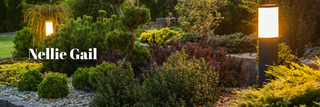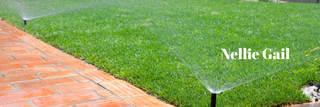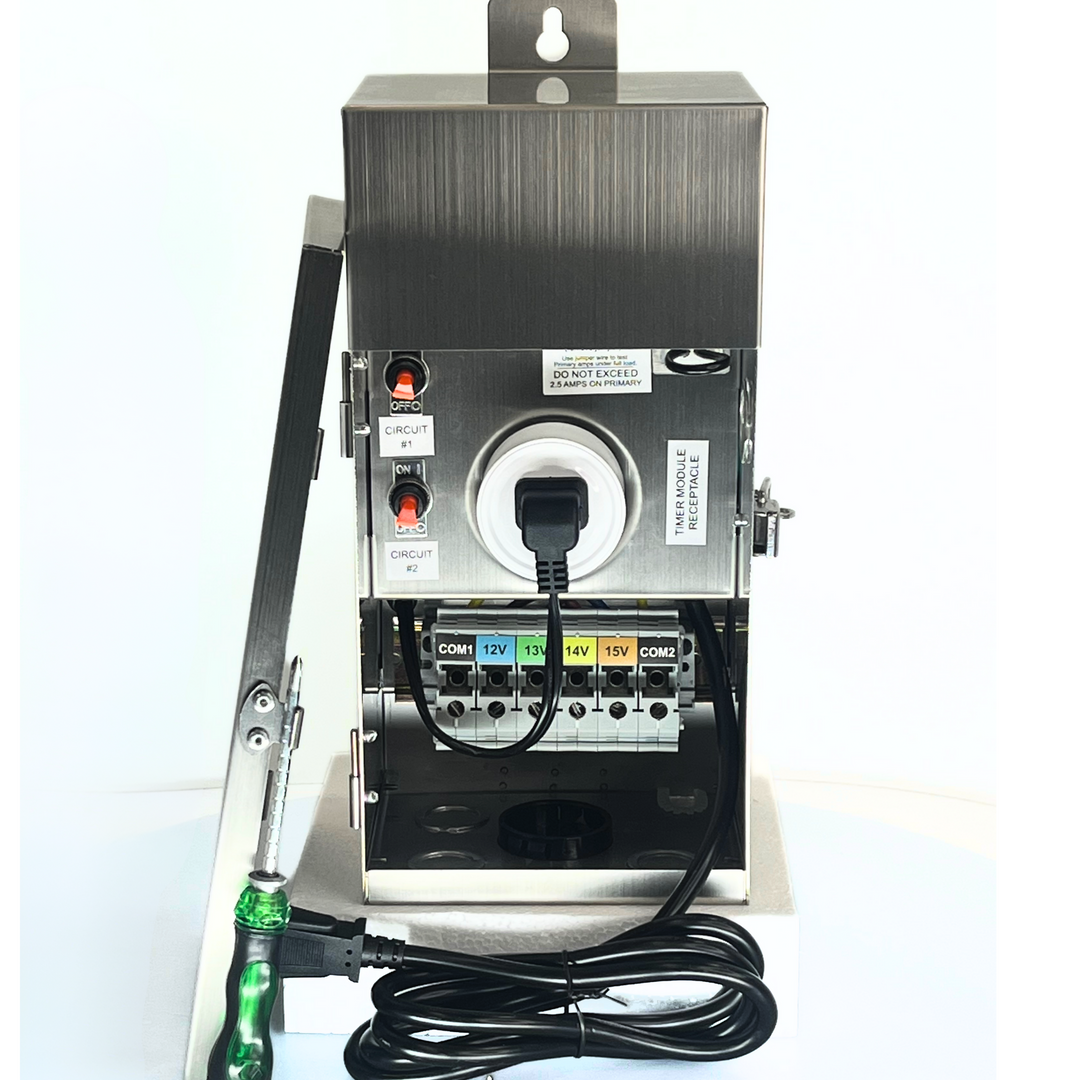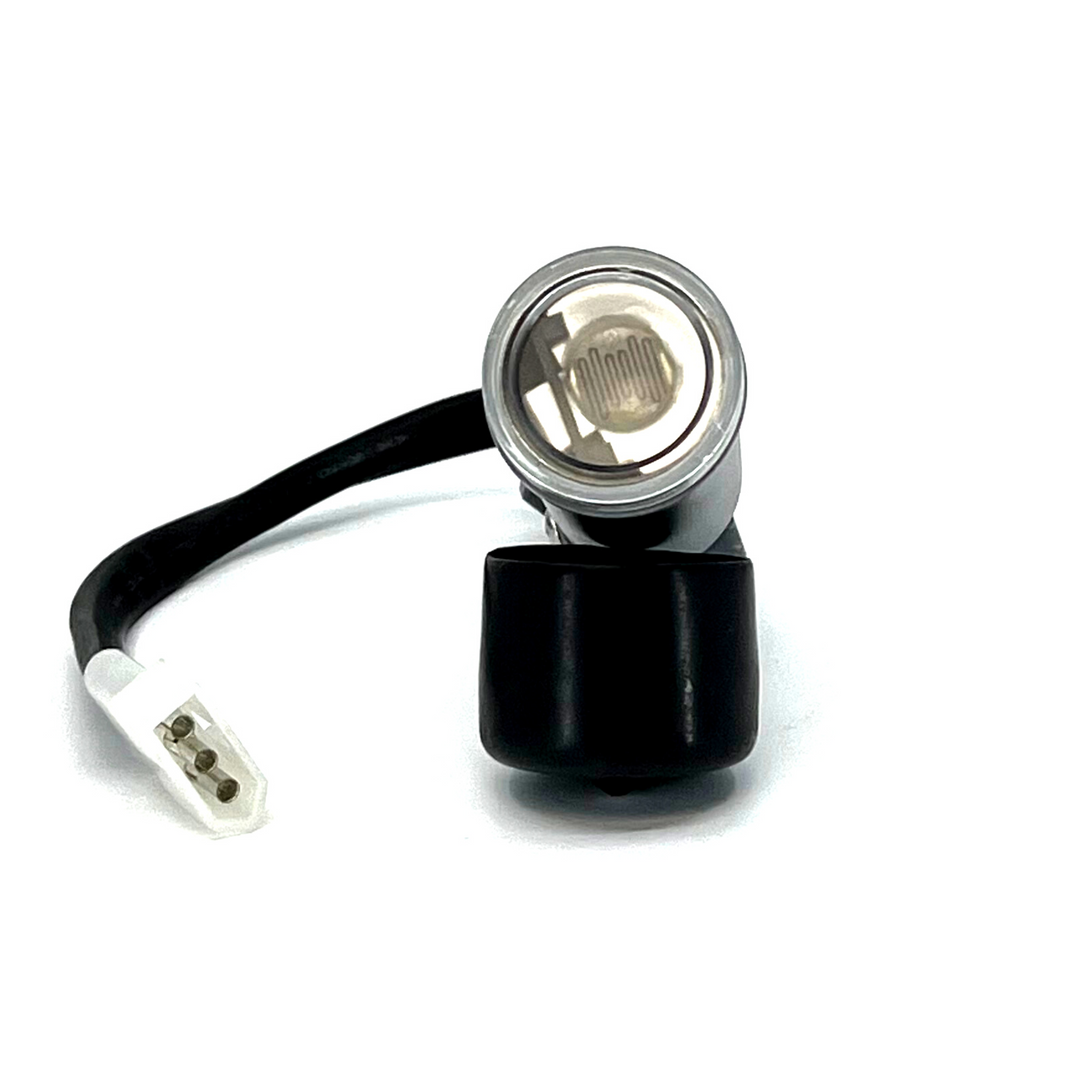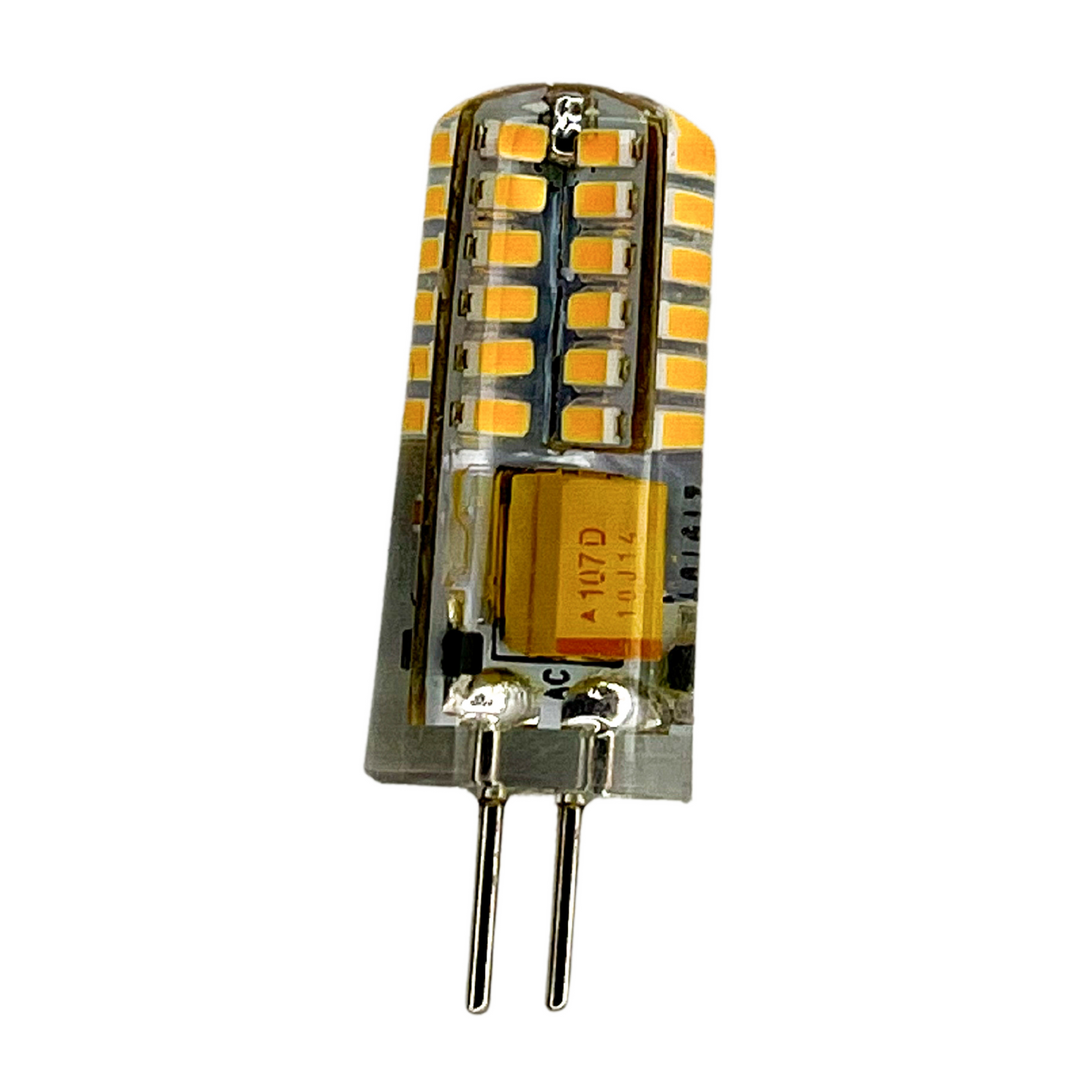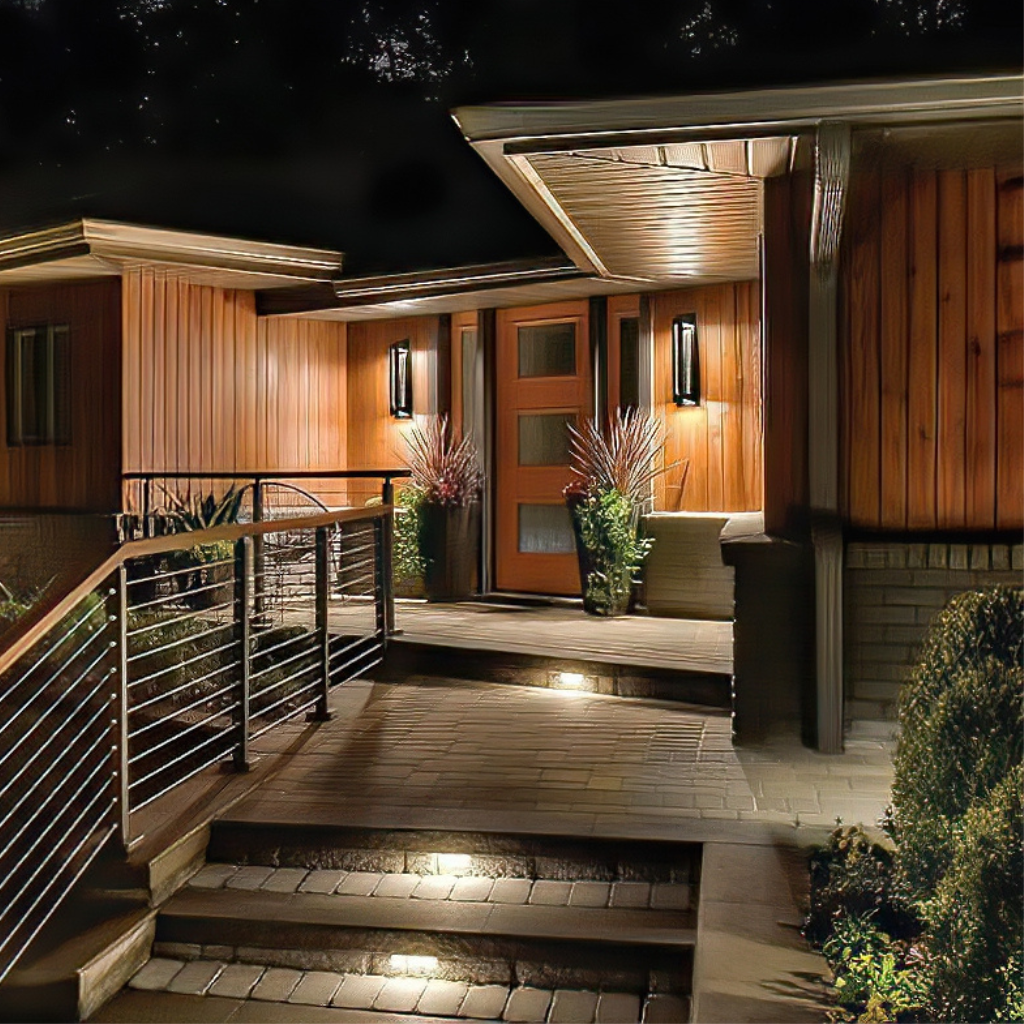
How To Install Top Notch Landscape Lighting Guide
|
|
Time to read 17 min
Lighting is a powerful, yet often overlooked tool when it comes to outfitting your landscape. With a few well-placed fixtures, it can not only enhance your home’s curb appeal, but also create a more functional outdoor living space. In this article, we'll go over the concept of top notch landscape lighting, its uses, and some tips on how to get started.
What Are Landscape Lights?
Landscape Lighting s are a type of lighting that is used to accentuate certain features in your yard or garden. They're designed to be minimal in size and blend in with their surroundings, and serve as an unobtrusive way to add light to your outdoor space.
What's The Difference Between Landscape Lighting And Traditional Lights?
The main difference between landscape lighting and traditional lights is the fact that landscape lighting is specifically designed for use in landscapes. What does this mean? Although they both use similar technology in generating light, landscape lights are designed for outdoor settings, so they're typically structured to be weather resistant. They also have a much wider beam angle, so that the light they create is diffused over a larger area. This makes them ideal for use in gardens and other outdoor spaces where you want to add a bit of light without being too overwhelming. Traditional lights can also be used for landscape lighting, but they may not be as effective at accentuating certain features or providing a soft, ambient light.
The Different Types Of Landscape Lighting lights That Exist
When it comes to configuration options, you can get landscape lights in a number of unique varieties. The following is a breakdown of some of the most popular.
-
Spotlights: Landscape Lighting Spotlights are a rather broad category used to describe lighting that points in only one direction. They can range in brightness levels and coverage area, and are often used to accentuate specific features in your landscape. For example, you might use a spotlight to highlight a statuesque tree in your garden, or to cast light on an interesting architectural feature of your home.
-
Floodlights: Landscape Lighting Floodlights are similar to spotlights in that they also emit light in only one direction. However, they differ in terms of the intensity and coverage area of their light. Floodlights tend to be much brighter than spotlights, and their beam angle is also wider. This makes them ideal for use in larger outdoor spaces where you need more light to cover a larger area. You might use floodlights to light up your driveway, or to provide extra light in your backyard at night.
-
Step Lights: Landscape Lighting Step lights are designed to be placed on stairs or other raised surfaces, and they provide a gentle light that illuminates the area around them. They're often used in conjunction with other types of landscape lights to provide a well-rounded lighting scheme.
-
In-Ground Lights: Landscape Lighting In-ground lights are designed to be placed directly into the ground, and they're often used to provide accent lighting along pathways or driveways. They tend to be smaller in size than spotlights and floodlights, and their light is usually more diffused. This makes them a good option if you're looking for landscape lights that are less obtrusive.
- Post Lights: Post Landscape lighting are designed to be placed atop posts or other tall structures. They provide a downward-facing light that illuminates the area around them. Post lights are often used in pairs or groups to provide symmetry and balance in a landscape lighting scheme.
What Are The Benefits Of Getting Landscape Lights?
Beautification: Perhaps one of the best things about getting landscape lighting is the fact that they can be excellent tools in beautifying your yard. While something as simple as lighting may seem insignificant when it comes to outdoor landscape lighting decoration, it can actually make quite a difference. With it, you can easily feature textures with eye-catching detail, accent architectural fixtures and even emulate a resort-like feel in your space. What's more, landscape lights can also come in a range of unique configurations and designs, allowing them to serve as a lovely edition to your outdoor space whether it's day or night.
Safety: Your home is your most valuable asset, and it's essential to prioritize its security in every way you can. Landscape Lighting has long been an effective defensive tool in deterring trespassers and crime in general, working as a means to easily draw attention to spaces, identify surroundings and more. Landscape lighting can provide your home with an extra layer of security by doing all of the above, and they'll also light the way for you and your family when arriving home at night.
Functionality: There are some homeowners who believe that landscape lighting are only meant to be used for show, but that couldn't be further from the truth. While their beauty should never be underestimated, landscape lights can actually serve a number of practical purposes as well. For example, they can help you more easily find your way around your outdoor space at night or in the dark, and they can also provide extra lighting for gatherings and parties. landscape lights can even be used to light up a garden or backyard landscape lighting so you can enjoy it even when the sun goes down.
Understanding Low Voltage Landscape Lighting
So you're familiar with the concept of general landscape lighting - specially designed, unobtrusive fixtures used to add a touch of extra visibility or flair to outdoor spaces. But did you know that within this category, there exists a whole other subtype of landscape lighting known as low voltage landscape lights?
While the most common form of landscape lighting is arguably the LED landscape lighting, which operates via a Light Emitting Diode-based system, low voltage landscape lights are also popular in the world of landscaping. They're used to provide the same basic benefits as other landscape lights - i.e. they improve the look of your space and make it more functional - but they do so through a different delivery method.
How Are Low Voltage Landscape Lighting Different Than Regular Landscape Lighting?
Low voltage landscape lighting are very similar to traditional landscape lights in terms of both their purpose and their appearance. However, as their name suggests, they run on lower voltage power - usually 12 volts - which is delivered via thin, inconspicuous wiring. Because of this, they tend to be safer and more energy efficient than their 110-volt counterparts, making them an increasingly popular choice for homeowners.
Is There A Benefit To Choosing Low Voltage Landscape Lighting Over Regular Ones?
There are a number of reasons why homeowners might choose low voltage landscape lights over regular landscape lights, including the following.
They're safer: Because they operate on lower voltage, low voltage landscape lights pose less of a fire hazard than traditional landscape lights.
They're more energy efficient: Low voltage landscape lighting are more energy efficient than regular landscape lights because they use less power to operate.
They're easier to instal: Low voltage landscape lighting are typically easier to install than regular landscape lights because they don't require as much wiring.
How Do Low Voltage Landscape Lighting Systems Work?
Low voltage landscape lights get their power from a landscape lighting transformer, which steps down the voltage from your home's main power supply (usually 110 volts) to 12 volts. This lower voltage is then sent through thin, inconspicuous wires to the individual fixtures, where it is used to power the light.
How Do I Get Low Voltage Landscape Lighting For My Property?
If you're interested in getting low voltage landscape lights for your property, there are a few things you'll need to consider.
How Do I Get Low Voltage Landscape Lighting For My Home/Property?
If you're interested in getting low voltage landscape lighting for your property, there are a few things you'll need to consider.
Installation Method
One of the first things you'll need to decide is how you want your low voltage landscape lighting to be installed. You can choose to either do it yourself or have the job done by a professional, depending on your level of experience and comfort with electrical work. If you opt to do it yourself, be sure to thoroughly research the installation process before beginning, as improper installation can be dangerous.
Landscape Lighting Configuration
Another important thing to consider is the configuration of your low voltage landscape lighting. There are a few different options to choose from, including floodlights, spotlights, and step lights. Each one has its own unique purpose and advantages, so be sure to select the option that best suits your needs and property.
Power Source
Another thing you'll need to consider is what type of power source you want your low voltage landscape lights to have. There are two main types of power sources - electric and solar - and each has its own set of pros and cons.
Electric: Electric-powered low voltage landscape lighting are the most popular type of landscape lights and are powered by your home's electrical system. This means they're more reliable than solar-powered lights, but they're also more expensive to install.
Solar: Solar-powered low voltage landscape lighting are a unique subset of landscape light that is powered by the sun. They work differently from other low voltage lights, are environmentally friendly and easy to install, but are also less reliable in low-light conditions.
How To Install Low Voltage Landscape Lighting
If you're planning on installing your low voltage landscape lighting yourself, there are a few things you'll need to know before getting started.
Tools And Materials Needed
Before you begin, be sure to gather all of the tools and materials you'll need for the job. While this can vary based on the type of lights you're installing and the nature of your project, you'll almost always need the following.
Low voltage landscape lighting fixtures: These are the parts of your system that will actually light up your yard. The quantity you plan on installing will depend on the size and layout of your property.
Low voltage landscape lighting transformer: This is the device that steps down the voltage from your home's main power supply to 12 volts. It's recommended that you opt for a transformer larger than you currently need in the event that your landscape's setup expands. For example, if you plan on installing 400 watts of lights, buying a 600-watt transformer might be a good idea of you want to add more fixtures later on.
Wire: You'll need wire to connect your fixtures to your transformer. Be sure to purchase the correct type and gauge of wire for your project.
Wire connectors: These are used to connect the wire to your landscape lighting fixtures. There are different types of wire connectors, so be sure to purchase the right ones for your project.
Wire strippers: These are used to strip the insulation off of your wire so that you can make connections.
Shovel: This is used to dig holes for your fixtures and wires.
Drill: This is used to make holes for your wire in any solid surfaces like walls or decks.
The Location Of Your Install
Location is super important when it comes to setting your landscape lighting system up. Their specific positioning and distance from one another will play a large role in how they ultimately look.
If you're going for a more subtle appearance, stick with placing the lights further apart. If you want something more dramatic, then consider putting them closer together.
Their height can also make a difference in their final look. As a general rule, the higher a landscape light is installed, the farther it will reach. So, if you're looking to light up a large area, placing your lights on high surfaces or installing them in elevated positions can be a good idea.
Also be sure to keep seasonal factors in mind, such as how your landscape lights' location on your property may fare with changing weather conditions. For example, are you installing them in a place that leaves them prone to be run over by plows in the winter?
When choosing the spots you want to install the lights themselves, you'll also need to choose a location for your transformer. This is the part of the system that steps down the voltage, so it needs to be placed as close to the power source as possible. It can be either inside or outside of your home, but should be placed in a dry, protected area where it won't be exposed to adverse conditions.
Installation Steps
Once you have all of your tools, materials and plans sorted out, you're ready to begin installation!
It's important to note that the installation process can differ slightly based on the type of light fixtures you're using. So, be sure to consult your fixtures' specific instructions before getting started.
In general though, you can expect the process to go something like this.
-
Positioning Your Landscape Lighting Fixtures: First off, you're going to want to make sure you have your planned lighting setup properly laid out across your space. Place your fixtures where you'd like them to go, and measure the appropriate length of wire you'll need for each connection.
- Digging Holes: Once you have your landscape lighting fixtures and wires positioned, it's time to start digging the appropriate holes and spaces for each. When it comes to fixture placement, be sure to dig the hole deep enough so that the entire fixture will be underground. This helps keep it more secure and protected from being damaged.
As for wire placement, you'll want to make sure the wires are buried at least 6 inches underground. This helps to prevent them from being damaged or interfered with.
Mounting The Low Voltage Lighting Transformer
Now it's time to mount your low voltage landscape lighting transformer.
As we mentioned before, the transformer is a key part of the system that steps down the voltage from your home's power source. It needs to be placed as close to the power source as possible, in a dry and protected area.
Once you've found the perfect spot, use the included mounting hardware to secure it in place.
Since the transformer will always be plugged in, you'll also likely need to replace your standard outlet cover with an in-use weatherproof cover, which can be found at most home centers and hardware stores.
Installing The Landscape Lighting Wire
With the transformer mounted, you're now ready to start installing the wire.
Begin by running the wire from the transformer to the first light fixture location. If you're running wire underground, be sure to use direct burial rated (DBR) wire, which is specifically designed for underground use.
Once you reach the first light, use the appropriate wire connectors to join the wire to the Landscape lighting fixture. The type of connector you use will depend on the specific light fixture you're using.
From there, continue running and connecting the wire until you reach your final Landscape lighting fixture.
Connecting The Landscape Lighting
Now it's time to connect the landscape lighting!
Start by connecting the wire from the final light fixture back to the transformer. Once again, use the appropriate wire connectors for your fixtures.
From there, you can begin connecting each light fixture to the wire, one by one. Again, the type of connector you use will depend on your specific fixtures.
Once all of the fixtures are connected, go back and double check all of your connections to make sure they're secure. You can also test your transformer out to ensure it's working properly.
Planting Your Fixtures
Now it's time for the final step: planting your fixtures! While the specific method will differ based on the type of fixture you're using, in general, you'll want to start by excavating a hole that's slightly larger than the base of your light.
From there, insert the light into the hole and backfill it with soil, packing it down around the light to secure it in place.
Be sure to make your fixtures straight and level, so they look their best and cast light in the desired direction.
Repeat this process for each of your lights until they're all in place.
Once all of your fixtures are installed, give the entire system a final test to ensure everything is working properly. And that's it! With these steps, you should now have a fully functioning low voltage lighting system. Be sure to consult your fixtures' specific instructions for any additional details or tips.
Great Landscape Lighting Ideas To Try Out
Now that you know how to install low voltage landscape lights like a pro, it's time to put those skills to good use! There are tons of unique and innovative ways you can implement lighting into your yard or garden.
Here are a few of our favorite ideas to get you started.
Pathway Landscape Lighting
One of the most popular uses for landscape lighting is pathway Landscape lighting. This involves lining the edges of your walkways, paths and driveways with lights. Not only does this provide a warm and inviting look, but it also helps to prevent trips and falls.
There are a variety of different fixtures you can use for pathway lighting, so be sure to choose one that fits both your style and needs.
Garden Landscape Lighting
Another great way to use landscape lights is in your garden. Strategically placed lights can highlight specific plants or features, and create a truly magical space.
There are tons of different ways you can get creative with garden lighting. You could line the perimeter of your garden with lights, or create a focal point by placing a light in the center.For a more subtle look, try using solar-powered lights. These are easy to install and don't require any wiring.
Deck & Patio Landscape Lighting
If you have a deck or patio, lighting is a great way to extend your living space and make it more enjoyable. There are a variety of different fixtures you can use to achieve the look you want.
String lights are always a popular choice, and can create a warm and inviting atmosphere. For a more functional approach, try installing recessed lights or wall sconces. These provide targeted illumination and can be used to highlight specific areas or features.
Water Feature Landscape Lighting
Another great way to use landscape lights is to highlight your water features. This could include anything from ponds and fountains to swimming pools and waterfalls.
Not only does this add a visually stunning element to your outdoor space, but it can also help to create a more relaxing atmosphere.
There are a variety of different Landscape Lighting fixtures you can use for water feature lighting, so be sure to choose one that is specifically designed for use in wet areas.
Tree Landscape Lighting
For a truly dramatic look, try lighting up your trees! This is a great way to add some extra dimension to your outdoor space.
There are a few different ways you can go about tree landscape lighting. One popular option is to wrap the trunk and branches with string lights. This creates a fairy-tale-like effect that is sure to impress.
Another option is to install ground lights at the base of the tree. This illuminates the trunk and branches from below, and can create a stunning visual effect.
Accent landscape Lighting
In addition to functional landscape lighting, you can also use landscape lights for purely aesthetic purposes. This is known as accent lighting, and can be used to highlight any feature or element you want to draw attention to.
For example, you could use accent lighting to highlight a piece of art, garden statue or outdoor furniture. Or, you could use it to create a focal point in your outdoor space.
There are a variety of different fixtures you can use for accent lighting, so be sure to choose one that fits your needs and style.
Wall Landscape Lighting
Spotlights can be a great tool in up lighting or down lighting flat surfaces like walls and siding. Up lighting is when the light is pointed up at the wall, and down lighting is when the light is pointed down. These two techniques can be used to create a variety of different looks.
For example, landscape up lighting can be used to create a warm and inviting look, while down lighting can be used to add some extra dimension to your outdoor space.
Step Landscape Lighting
If your home has steps, lighting them is a great way to improve both safety and style. There are a variety of different fixtures you can use for step lighting, so be sure to choose one that fits both your needs and style.
One popular option is to use recessed Landscape lighting. These can be installed in the risers of your steps, and provide a soft and subtle illumination. Another option is to use solar-powered lights. These are easy to install and don't require any wiring.
Driveway Landscape Lighting
If you have a driveway, lighting it is a great way to improve both safety and curb appeal. There are a number of ways you can do this, including driveway markers, which are specifically designed for this purpose.
Another option is to line the edges of your driveway with landscape lights. This provides a subtle yet effective way to light up your space.
Security Landscape Lighting
Last but not least, landscape lights can also be used for security purposes. This involves installing lights in strategic positions around your property to deter burglars and intruders.
There are a variety of different fixtures you can use for security lighting, so be sure to choose one that is specifically designed for this purpose.
For the best results, be sure to install your security lights in a way that maximizes their coverage. This could involve placing them near doors and windows, or in areas where there is little to no natural light.
Other Best Practices To Make The Most Out Of Your Landscape Lighting
Looking to even further invigorate your landscape with lighting? Try these tips and best practices:
Use A Timer
To get the most out of your landscape lighting, be sure to use a timer. This will ensure that your lights are only on when you need them, and will help to save energy.
Consider Solar Lights
If you're looking for an eco-friendly and cost-effective way to light up your landscape, consider solar lights. These lights are powered by the sun, so they don't require any electricity.
Choose The Right Bulbs
When choosing bulbs for your landscape lighting, be sure to choose ones that are specifically designed for outdoor use. These bulbs are able to withstand the elements and will last longer than regular bulbs.
Use A Variety Of Light Sources
For the best results, be sure to use a variety of different light sources in your landscape lighting design. This could include a mix of solar, LED and halogen lights.
Consider The Size Of Your Outdoor Space
When choosing landscape lights, be sure to consider the size of your outdoor space. This will help you to choose the right number and type of lights for your needs.
Choose The Right Fixtures
When it comes to landscape lighting, not all fixtures are created equal. Be sure to choose fixtures that are specifically designed for your needs and style.
Think About Functionality
In addition to style, be sure to also think about functionality when choosing landscape lights. This includes things like the height of the light and the angle of the beam.
So there you have it! Our complete rundown on everything landscape lighting. Low voltage lighting is a great way to add beauty, safety, and value to your home. We hope this guide has given you some ideas for how to use landscape lights in your own home and enjoy all of the benefits it has to offer.
For more information on landscape lighting, be sure to check out our other blog posts. Thanks for reading!
Top Notch landscape Lighting, Rapture, Delight, Flawless, Illuminator, Enhancer, Classic, Marvelous. Check them out






